
Jan Alojzy Matejko was a Polish painter, a leading 19th-century exponent of history painting, known for depicting nodal events from Polish history. His works include large scale oil paintings such as Stańczyk (1862), Rejtan (1866), Union of Lublin (1869), Astronomer Copernicus, or Conversations with God (1873), or Battle of Grunwald (1878). He was the author of numerous portraits, a gallery of Polish monarchs in book form, and murals in St. Mary's Basilica, Kraków. He is considered by many as the most celebrated Polish painter, and sometimes as the "national painter" of Poland.
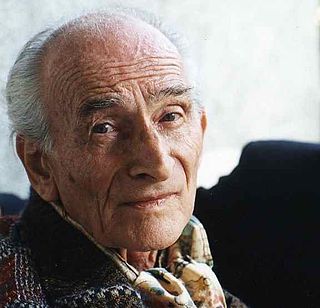
Balthasar Klossowskide Rola, known as Balthus, was a Polish-French modern artist. He is known for his erotically charged images of pubescent girls, but also for the refined, dreamlike quality of his imagery.

The Death of General Wolfe is a 1770 painting by Anglo-American artist Benjamin West, commemorating the 1759 Battle of Quebec, where General James Wolfe died at the moment of victory. The painting, containing vivid suggestions of martyrdom, broke a standard rule of historical portraiture by featuring individuals who had not been present at the scene and dressed in modern, instead of classical, costumes. The painting has become one of the best-known images in 18th-century art.
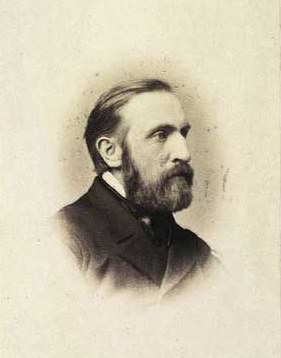
Christen Dalsgaard was a Danish painter, a late student of Christoffer Wilhelm Eckersberg.

Jozef Murgaš was a Slovak inventor, architect, botanist, painter and Roman Catholic priest. He contributed to radio development, which at the time was commonly known as "wireless telegraphy".

Martin Benka was a Slovakian painter, illustrator, art teacher and Esperantist. He is generally considered to be the founder of Modernist 20th century Slovak painting.
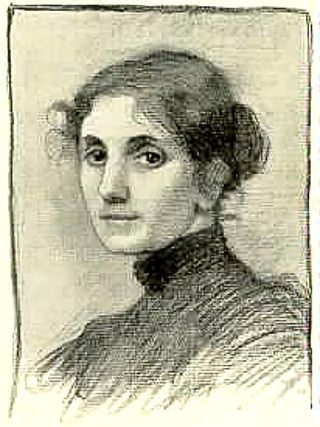
Marianne Stokes was an Austrian painter. She settled in England after her marriage to Adrian Scott Stokes (1854–1935), the landscape painter, whom she had met in Pont-Aven. Stokes was considered one of the leading women artists in Victorian England.
Jozef Jankech is a Slovak football coach. He was the second manager of the Slovak national team.
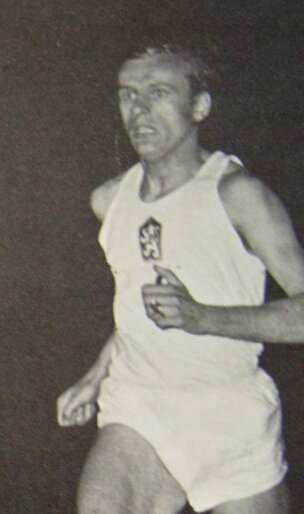
Jozef Plachý is a Slovak former middle distance runner. He competed for Czechoslovakia at the 1968, 1972 and 1976 Summer Olympics in the 800 m and at the 1980 Olympics in the 1500 m event with the best result of fifth place in 1968. In 1969–1974 Plachý won four medals at European championships, indoors and outdoors. On 27 June 1973 he "helped" Marcello Fiasconaro, by chasing him through the race, to set an 800 m world record in Milan.
Polish Impressionism was an art movement inspired by French Impressionism. Władysław Podkowiński is generally credited with introducing the movement to Poland after a trip to Paris in 1889, where he was profoundly influenced by French Impressionist painters including Claude Monet. Toward the end of his life, however, he turned more toward Symbolism. Olga Boznańska is possibly the most well known Polish Impressionist, recognized in London and Paris, and winning many prizes. The French Government purchased two of her works.

Władysław Łuszczkiewicz was a Polish historian and painter of the late Romantic era from Kraków, active in the period of the foreign partitions of Poland. He was a professor at the Academy of Fine Arts and served as its principal in 1893/95. One of his best students was Jan Matejko, the eminent Polish historical painter and later, his close associate. Łuszczkiewicz taught painting, drawing, anatomy and architectural styles. Highly educated, he also worked as conservator of architectural monuments in the city later on in his career, and wrote historical dissertations.
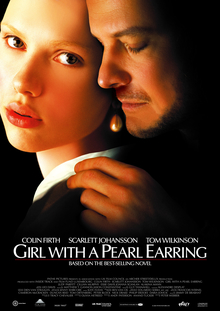
Girl with a Pearl Earring is a 2003 drama film directed by Peter Webber from a screenplay by Olivia Hetreed, based on the 1999 novel of the same name by Tracy Chevalier. Scarlett Johansson stars as Griet, a young 17th-century servant in the household of the Dutch painter Johannes Vermeer at the time he painted Girl with a Pearl Earring (1665) in the city of Delft in Holland. Other cast members include Tom Wilkinson, Cillian Murphy, Essie Davis, and Judy Parfitt.

Girl in a Folk Costume is a painting by the Latvian painter Jānis Tīdemanis from 1930.

The Girl in a Picture Frame is a 1641 oil on panel painting by the Dutch artist Rembrandt. It is also known as The Jewish Bride and The Girl in a Hat. With The Scholar at the Lectern and Landscape with the Good Samaritan, it is one of three Rembrandt paintings in Polish collections. It is currently located at the Royal Castle in Warsaw.
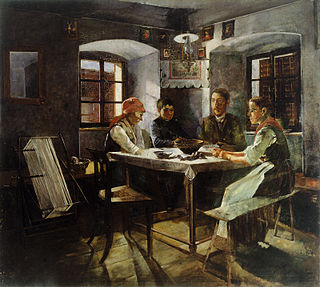
Jožef Petkovšek was an important Slovenian painter who brought existentialist and dark modernist themes to the Slovenian art scene. Despite a short and turbulent life, his work influenced the preeminent Slovenian novelist Ivan Cankar, was promoted by Rihard Jakopič, the famous impressionist painter and founder of the National Gallery, and led Slovenian art into the 20th century.
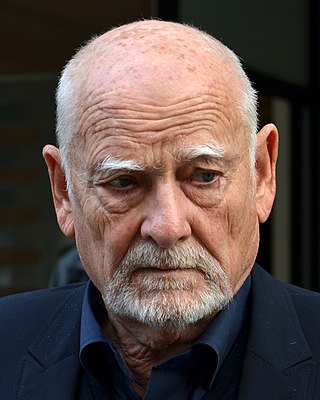
Theodor Pištěk is a Czech painter, costume designer, set designer and former racing driver. His costume designs and film sets are internationally acclaimed. He won an Oscar for his costumes for Amadeus, directed by Miloš Forman. For Forman’s next film, Valmont, Pištěk won a César Award and was nominated for an Oscar. In 2003 he received the Czech Lion Award for Unique Contribution to Czech Film, in 2013 he was awarded the Crystal Globe for Outstanding Artistic Contribution to World Cinema, and in 2017 he received the Golden Slipper for Outstanding Contribution to Films for Children and Young People.

Seated Girl in Peasant Costume is an oil-on-panel painting by Dutch artist Gerard ter Borch, created c. 1650. It is held in the Rijksmuseum, in Amsterdam.















